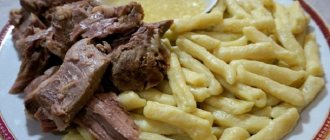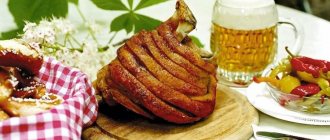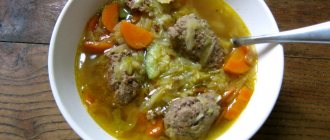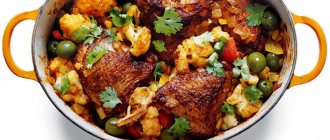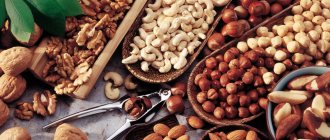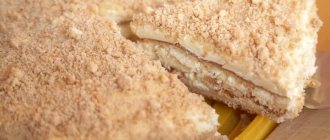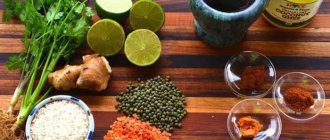Over the past decade, Danish cuisine has become increasingly associated with the so-called “New Nordic cuisine”, a movement that began in 2003 with the opening of the restaurant Noma in Copenhagen, and is characterized by a combination of modernity and national flavor. It's not a bad thing, of course, but it doesn't quite give the right idea to the casual viewer interested in what real Danish food is actually like. Although Copenhagen restaurants do not ignore Danish cuisine.
To find authentic Danish food, save some money and try an old Danish diner instead, where the sandwiches are artfully folded, meat and potatoes are at the head of the table, and the portions are usually large and filling.
Here are ten very Danish dishes that will inspire you to come back to Copenhagen again and again.
Sandwiches (Smørrebrød)
The name “smerrebred” covers a huge number of different types of open sandwiches: a thin slice of rye bread, buttered and filled with meat, vegetables or salads. The concept most likely dates back to farmhands' lunches dating back to 1840. Today you'll find smørrebreds on the menus of eateries, cafes and restaurants across the country and be amazed at how different they can be. There are absolutely simple ones, with boiled potatoes, mayonnaise and green onions; light, with fried fish and lettuce; spicy, with smoked eel and fried eggs. They are usually served in an assortment of three to six pieces, but you can buy one. Remoulade sauce is added to all sandwiches. It is based on mayonnaise, and is served with almost any dish, even with fish fillet, even with a hot dog at a cheap street kiosk. Capers, pickles and carrots are added to it.
Typical Products
These include:
- piece meat: pork, beef, lamb;
- minced meat: meatballs, sausages, sausages, cutlets;
- offal: liver, fried in pieces, in the form of pate, hearts;
- poultry: chicken, goose, duck;
- fish and seafood: cod, haddock, salmon, eel, herring, flounder, trout, shrimp, mussels;
- vegetables: cabbage, potatoes, carrots, beets, celery, spinach, radishes, onions, zucchini;
- mushrooms;
- greens: dill, rosemary, oregano, chives, thyme, garlic, watercress, parsley;
- berries: cloudberry, princess, currant, cherry;
- fruits: apples, plums (prunes), pineapple;
- dairy products: cheese, cottage cheese, cream;
- bakery products: rye, French bread, wheat buns, pretzels;
- sauces: berry, mayonnaise, mustard;
- desserts: sweet pastries, pudding, marzipan;
- drinks: juices, coffee, hot chocolate, sparkling water, jelly;
- alcohol: aquavit, schnapps, beer, mead.
Danish buns (Wienerbrød)
The most wonderful way to start the day in Denmark is with a Viennese bun for breakfast. The flaky crispy texture, buttery taste, creamy fillings, and sweet glaze will not leave anyone indifferent. They are called Viennese, although they come from Austria, but the Danes made them their national dish. There are many different types of Viennese buns, but the classic ones are the escargot, a flaky cinnamon roll with butter, or the denser coffee bun with butter and brown sugar.
Basic cooking methods
Long, hungry winters dictated the need for the Danes to stockpile food. Long-lasting food was needed by the Vikings going on long sea voyages. The earliest methods were fermentation, drying, smoking, and salting. Salted meat and fish were soaked before consumption to remove excess salt, and then fried.
Now poultry meat is also salted. One of the traditional Danish dishes is salted chicken served with mayonnaise sauce and pineapple juice.
Products that require heat treatment are fried until crisp, stewed, boiled, smoked, baked.
Some cooking methods may seem strange to tourists: for example, cod in Denmark is usually boiled rather than fried. The traditional Danish menu includes dishes that do not need to be fried or boiled, such as the sweet summer soup koldskol. To prepare it, just beat all the ingredients and add a crunchy or berry topping.
In Denmark, cod is traditionally boiled rather than fried.
Oatmeal, sir
Nutritious and inexpensive, porridge has long been a traditional hot breakfast in Denmark, as in many countries around the world. Here it typically includes grains such as rye, oats and barley; for example, there are porridges prepared with leftover rye bread and beer, and there is traditional Christmas porridge with rice. In Copenhagen, interest in porridge became more intense when a porridge bar was opened in 2011, introducing this dish to high culinary art. This is a great place for breakfast, where you can enjoy oatmeal with fresh apples and toasted almonds or wheat with honey and fruit.
Characteristic features of the national cuisine of Denmark
Danish national cuisine is a combination of culinary traditions from many countries in northern Europe. National cuisine is distinguished by a rich assortment of dishes and the high nutritional value of each of them. This is due to climatic conditions, because in low temperatures it is vitally important to provide yourself with high-calorie food.
This is interesting! Culinary experts assess Danish cuisine as a combination of German and Scandinavian traditions. It is dominated by meat, seafood and vegetables. The amazing combination of seemingly simple products evokes admiration among the most sophisticated culinary gourmets.
To fully appreciate the peculiarities of Danish cuisine and try original national dishes, just visit a cafe or tavern. In Denmark, the restaurant business has its roots in the distant past. Many cafes have recipes on their menus that date back to the 13th century. Some critics argue that Danish national dishes are morally outdated, since the limited composition of products and the absence of foreign ingredients in the recipes makes it impossible to create truly tasty and original dishes. However, local chefs have managed to change the situation and revive genuine interest in ancient recipes, modifying and improving them.
Meatballs (Frikadeller)
Neighboring Sweden may be better known for its meatballs, but Denmark has better ones.
A Danish delight for centuries, this dish is usually made from pork and served with brown gravy, boiled potatoes, red cabbage and cucumbers on the side, depending on what time of day you eat. Any restaurant in Copenhagen that sticks to the old school and traditions will definitely offer them on the menu.
Smørrebrød | Smørrebrød
Denmark is often called the “land of sandwiches”. They say there are so many of them here that you could eat them every day and never have them happen again in a whole year. Smørrebred is the name given to any Danish sandwich; it is a generic name. A slice of bread, sauce, meat or fish base, vegetables, herbs, cheese, ham - there are hundreds of combinations. A sandwich in Denmark is not just an addition to the main meal. Even the best restaurants in Copenhagen can order smørrebrød. In this case, the snack is usually eaten with a fork and knife. The exception is street food. Smørrebrød is a popular street food in Copenhagen and throughout Denmark.
Sweets and drinks in Danish cuisine
In Danish cuisine, various northern berries are traditionally used for desserts: lingonberries, raspberries, blackberries, cloudberries and others. They make jams, sauces, jelly, and compotes. The Danes love to add berries to porridge and baked goods. Traditional desserts include thick berry jelly with cream and apple-currant pie. The baked goods are also varied: muffins with cheese, pancakes, pies, buns. As for alcohol, the Danes prefer herbal schnapps, Danish beer and a variety of liqueurs. On holidays, mulled wine is brewed, and in the mornings, milk is preferred to other drinks, to which various seasonings can be added.
In addition to Viennese buns, chocolate buns covered with fondant and apple balls - round pancakes with filling and powdered sugar - are popular among Danes and tourists.
Children and adults love Oellebroed porridge. It is prepared from stale rye bread. It is filled with water or weak beer and left overnight. In the morning it is brought to a boil, sugar is added and decorated with whipped cream.
Benefit for health
Despite the fact that critics of Danish cuisine often argue that local dishes are heavy and too high in calories, nutritionists are convinced that Danish cuisine is very healthy. This is explained by the fact that local chefs approach the choice of products very responsibly. The country has the highest culinary standards, and the requirements for food quality are very strict.
Eating plenty of protein helps the Danes resist environmental stress by providing them with energy. Vegetables and fruits are sources of vitamins and minerals, and seafood contains omega-3 fatty acids and antioxidants.
Buttermilk koldskål | Coldskall
A sweet cold soup that is worth trying in Denmark in the summer. It is prepared using buttermilk and eggs. During the warmer months it is easily found in almost every restaurant and eatery in Copenhagen. Koldskål usually has a neutral taste (not sweet, with a slight sourness from added lemon), but it is always served with Danish cookies, homemade granola or berries. Airy, complemented by the pleasant crunch of kammerjunker sponge cakes and the most delicate texture, it’s not without reason that Denmark wins the hearts of those with a sweet tooth.
In Copenhagen supermarkets you can easily buy buttermilk koldskål in tetra packs. Pair it with traditional kammerjunker cookies. The freshly prepared version is, of course, tastier, but as a gift for loved ones, this will be the best.
Butter cookies with ginger Pepparkakor
Delicious Danish cookies are also traditionally prepared for Christmas. Its history is very distant. At the end of the 15th century, when King Hans, who often suffered from depression, blues and mood swings, reigned, his personal doctor prescribed him special ginger cookies.
The inventive doctor said that such baking would make anyone happier. There is even a record of this in one of the pharmacies in Copenhagen - it mentions that several kilograms of cookies were sent to the king. Since then, the Danes firmly believe that in order for the coming year to be happy, pepparkakor butter cookies with ginger must be present on the festive table.
In Denmark there is even a Christmas tradition: cookies are squeezed in a fist so that they break into three parts. Then they eat each part in turn, making a wish.
You can feel no less happy if you try other Danish pastries:
- small square hindbærsnitte cookies with raspberry jam and icing;
- vanilla-almond shortbread rings vaniljekranse;
- klejner cookies, which are not baked but deep-fried;
- spicy pebernødder cookies with the addition of cinnamon, cloves, cardamom, ginger and pepper.
Also on Christmas Eve you can eat tender and soft Danish honey cakes honningkage - they are incredibly tasty and sometimes resemble gingerbread cookies with a beautiful New Year's decoration.
Kokt torsk | Boiled cod
Among the fish dishes in Denmark, it is worth trying boiled cod. Europeans, of course, prefer fried fish. However, don't be too quick to give up this popular dish of traditional Danish cuisine. It is prepared with a delicious mustard sauce, which gives the fish an extraordinary taste. Boiled vegetables are used as a side dish: potatoes, carrots, green beans, peas, zucchini or something else. A little rosemary and allspice makes the cod even tastier. This dish is usually prepared on Christmas Eve in Denmark.
Kødboller | Meatballs
Appetizing small meat balls. Sometimes with a little spice, rice or breadcrumbs. Deep-fried kødboller is a popular street food in Copenhagen. They can be ordered with fries or on their own. This is a great snack to go with beer. But the most delicious meatballs are prepared in taverns - they are not fried, but stewed or steamed. Order the Danish national dish with a delicious creamy or tomato sauce. Take new potatoes or spaghetti with it.
Patisserie La Glace and amazing cakes
Every tourist should visit the La Glace confectionery in the center of Copenhagen. This delightful establishment was opened back in 1870 by pastry chef Nikolaus Henningsen. Six generations of owners have already changed, and the pastry shop is still considered a favorite place among all local sweet tooths and guests of the city. That's because they make delicious Danish cakes (in fact, most of them are sliced pieces of the famous Danish cakes). Either one costs €8.31 (DKK 62) per serving.
Sportskage
“Sports Pie” is the specialty of the establishment, the favorite dessert of the Danes. It was first baked in 1891, when the play “The Sportsman” premiered at the Copenhagen People's Theatre. The cake features a macaroon base and an incredibly fluffy mountain of whipped heavy cream, in which pieces of caramelized choux pastry and crushed nougat come across.
H. C. Andersen
This dessert is much more modern; it was invented in 2005 for the 200th anniversary of the birth of the famous storyteller. It consists of three sponge layers soaked in raspberry cream and lemon mousse.
HC HAT
This dessert won the “Cake of the Year 2005” nomination. It is a chocolate biscuit base with caramel mousse.
Efterårskage
As the fall blues set in, this Danish dessert is sure to lift your spirits. Of course, it’s completely chocolate! And the base, and truffles, and all this “sweet madness” is filled with chocolate on top.
Appelsinkage
The dessert is a macaroon base soaked in orange syrup. A thin layer of orange jam is applied on top, then whipped cream with lemon and orange juice (the layers are repeated several times). The top of the dessert is covered with citrus jelly and decorated with caramelized oranges.
In this same pastry shop you should definitely try the kartoffelkage (“potato”) cake. The dessert, with a generous amount of custard inside, is topped with a thin layer of marzipan and sprinkled with cocoa powder. Price – 5.23 € (39 DKK) per piece.
Every month the La Glace confectionery comes up with a new cake, so the menu is constantly expanding. If you find yourself in Copenhagen in October and attend Culture Night, be sure to visit this establishment. It will be possible to visit production workshops with truly fabulous mechanisms, with the help of which rivers of chocolate and milk are transformed into divine Danish cakes, pies and candies.
Stegte Sild
Herring is considered the most popular national Danish food. Every year residents consume about 500 tons of this fish. Basically, herring is pickled, smoked or filleted.
Stegte-sild is a very simple traditional dish, and this is what Scandinavia is all about - in Denmark they are sure that there is no need to improve nature: all the crystal purity and beauty is there from the very beginning. What could be tastier than fried fish with sweet onion rings? And what could be more beautiful than the pine wood on which this delicacy is served? Definitely, the dish is worth trying for every tourist in the country, and better yet, with a glass of aromatic wheat beer.
Rödgrd Med Flde
Many Danish dishes are prepared from berries, which grow wildly in northern European countries in the summer. The most striking example of such food is Rödgröd med flöde, or “red porridge”.
This popular dessert, which is an unstrained jelly soup, is incredibly tasty and healthy at the same time. When serving, it is supplemented with berries (red currants or raspberries), whipped cream, milk, and cream sauce. How can you resist and not try at least once?
They say that no real Dane can pronounce the name of the national dessert correctly. There is a legend that during the Second World War, “rödgrød med flöde” was a kind of password. Its pronunciation was used to distinguish between Danes returning to their homeland and Germans trying to cross the border.
Thematic tours
Getting to know national cuisine is one of the best ways to understand the culture of a particular country. Tastings can be done independently in traditional restaurants. But it will be much more interesting to do this in the company of a good guide who will give valuable advice and tell a lot of interesting things.
Andersen's favorite places
A fascinating tour of Copenhagen in Russian with excellent reviews from tourists. This is an opportunity to visit the house where the world's best storyteller lived, have a snack in the places where he dined, and try his favorite dishes. You can also try 12 types of herring dishes with beer, which Denmark is famous for. It will be delicious, educational, fun and magical!
Tastings in Copenhagen
An excellent food tour of Copenhagen for a family or small group. What should “real” Danish food be like? Where to buy the best seafood in Copenhagen? How does the country's modern cuisine differ from traditional cuisine? Why are Europeans crazy about Danish pastries? You will have to find answers to these questions, see the main gastronomic market of Copenhagen, which is included in the top 10 best in Europe, find a confectionery where desserts are baked for the royal family... A very eventful excursion, and most importantly - delicious.
Before you travel to Copenhagen, be sure to check out our Denmark shopping guide. Clothing, accessories, jewelry, souvenirs, delicacies - we have collected the best shopping ideas in one place.
>>> Useful services for travelers <<

